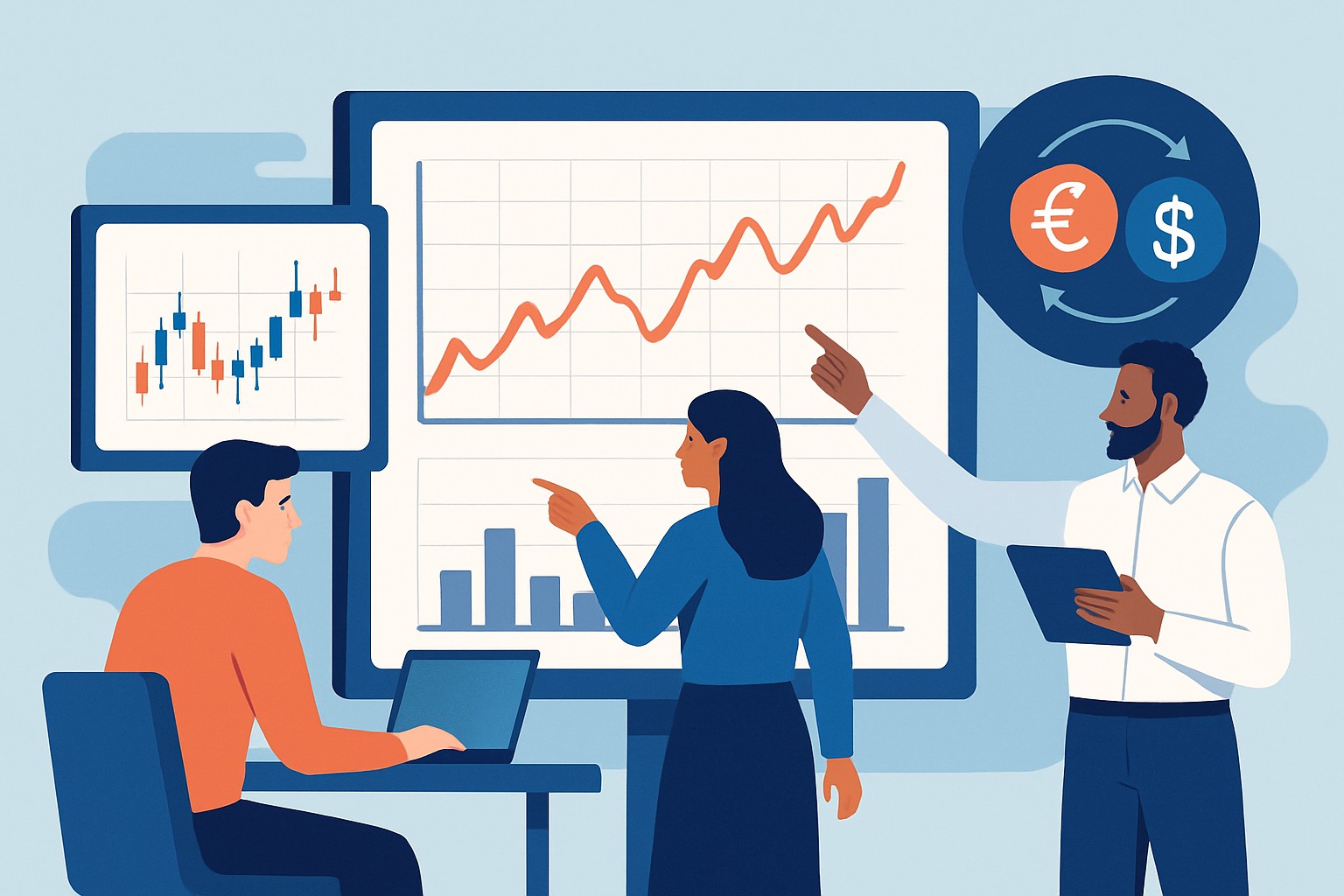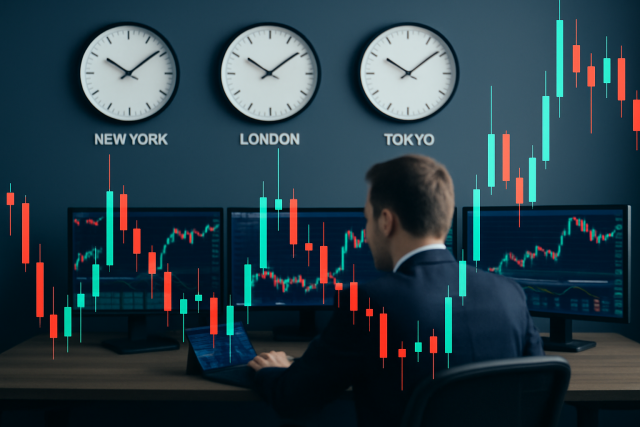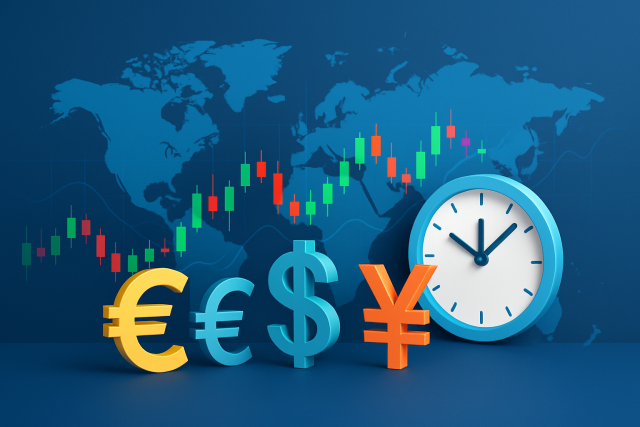
Trading Forex For Beginners To Get Started Smoothly
Discover how to trade forex for beginners with easy-to-understand concepts, step-by-step guides, and...

Forex trading is one of the largest and busiest financial markets on the planet where currencies swap hands between countries like a never-ending global dance. Every day millions of people around the world jump into forex trading, often lured by its easy access and the fact you can move in and out without much hassle thanks to its high liquidity. Wrapping your head around what exactly a forex trader does and how they go about it is a solid first step if you’re curious about this fast-paced world.
This article takes a closer look at what a forex trader actually does and their role in the bustling world of financial markets. It also covers the methods they swear by when trading and the ways they usually rake in profits from currency trading.
A forex trader dives into the bustling world of currency trading, buying and selling in the foreign exchange market with the hope of turning a profit from the ever-shifting values. They try to get a read on whether one currency will climb or drop against another, placing trades based on those gut-feeling predictions to cash in on the moves.
The forex market stands as the largest financial market on the planet with daily trading volumes that commonly soar past $6 trillion. It never really sleeps during the weekdays and operates around the clock. It features major currency pairs like the US Dollar and Euro that everyone keeps an eye on.
Forex traders make their money by riding the waves of currency price changes. They buy currencies they reckon will go up in value and sell off those they figure are headed south, all in the hopes of pocketing the difference.
Forex trading is a bit like snagging a great deal on something and then turning around to sell it once the price climbs a bit. Picture this: a trader buys Euros when their value is tempting and lower than usual, then waits for the price to tick up before selling them off.
Dive into the forex market by studying charts and listening for news that might hint at currency pairs ready to move.
Once you have done your homework, place buy or sell orders through your preferred trading platform. It’s like calling the shots from your own command center.
Apply solid risk management tricks like stop-loss orders to keep potential losses from sneaking up on you.
Keep a close watch on your trades and decide the right moment to close them. Locking in profits feels great and cutting losses early saves headaches.
Take any profits you’ve made and roll them back into new trades, keeping the cycle going like a well-oiled machine.
Forex traders lean on a mix of clever strategies to get ahead of market moves and hopefully turn a tidy profit. These techniques span the gamut—from scrutinizing price charts with a keen eye to staying on top of the latest economic news and trends that might shake things up.
Technical analysis involves diving into charts and using tools like moving averages and RSI to find trading opportunities—kind of like how a weather forecaster reads the skies to anticipate storms. Fundamental analysts watch economic reports, interest rate changes and geopolitical events to get an edge on currency moves. Then there are trend followers who aim to ride sustained price moves. Range traders prefer to play the sidelines and capitalize on prices bouncing between set levels. Of course, scalpers—those quick-footed traders—score many small wins by jumping in and out swiftly. They often rely on high leverage and lightning-fast execution.
Leverage lets forex traders handle bigger positions while putting up less cash but of course it comes with a bigger risk.
A $100 deposit suddenly gives you the reins to $1,000 worth of currency. It’s a double-edged sword. Your profits can get a nice boost when things go your way but your losses can stack up just as quickly if the market decides to throw you a curveball.
Discipline and keeping your emotions in check are absolutely key for maintaining consistent trading success. Avoiding those spur-of-the-moment decisions driven by fear or greed makes it a lot easier for traders to stick to their game plan and navigate risks with a bit more confidence and calm.

A typical forex trader's workstation displaying live currency charts, illustrating trading and risk management in action.
When it comes to forex trading, having the right set of tools and platforms at your fingertips can make all the difference. Traders often rely on a mix of sophisticated software and user-friendly platforms to navigate the fast-paced currency markets. From charting tools that reveal patterns hiding in plain sight to real-time news feeds that keep you ahead of sudden market moves, these resources are like having a seasoned co-pilot along for the ride. Whether you prefer platforms packed with advanced features or something more straightforward to get the job done, there is something out there to match every style and skill level.
Forex traders usually rely on dedicated software and platforms to dig into market trends and execute trades while staying in the loop with the freshest info.
Platforms like TradingView come packed with user-friendly charting tools that let traders truly make their charts their own, adding a variety of technical indicators to help steer their decisions. Plus, their social networking features create this cool space where traders from all over the world swap ideas and strategies like seasoned pros trading stories over coffee. Economic calendars and news feeds keep everyone in the loop on key events, so they’re not caught off guard when the market throws a curveball.
There are quite a few myths floating around about forex trading, like it being a sure-fire fast track to wealth or simply a fancy form of gambling.
Successful forex trading usually calls for setting realistic goals and exercising patience while committing to continuous learning.
Forex trading starts with getting familiar with the basics and then practicing without risking a dime at first. Next, finding a trustworthy broker is key. After that, cautiously gain experience with real money.
Start getting cozy with the basics of forex lingo by understanding how the market works and key concepts like pips, leverage and margin.
Open a demo account to practice trading with virtual money. It is a no-risk way to get familiar with the platforms before diving in.
Shop around carefully for brokers and aim for one that offers solid trading conditions, strong security and customer support you can truly rely on.
Draft a trading plan that outlines your strategies, risk management rules and goals. Then test it to see how it performs.
When you’re ready, jump into live trading with a small amount of capital. This is when you start mastering not only the market but also your own emotions.
Keep learning regularly, review your trades often and don’t hesitate to tweak your strategies as you gain confidence and experience.
Patience is absolutely key when dipping your toes into forex trading, especially for those learning what is a forex trader - success rarely knocks on your door overnight. Taking the time to really learn the ropes and committing to disciplined risk management can save you from some pretty expensive slip-ups down the line.
Are you tired of juggling multiple tools for your trading needs? TradingView is the all-in-one platform that streamlines your analysis and decision-making.
With its powerful charting capabilities, real-time data, and vibrant community, TradingView empowers traders like you to stay ahead of the market. Join thousands who trust TradingView for their trading success.
Elevate your trading game with TradingView, the ultimate platform for technical analysis and market insights. Gain access to advanced charting tools, real-time data, and a vibrant community of traders worldwide. Discover new opportunities and refine your strategies today.
15 articles published
Known for demystifying complex derivatives trading through accessible education, this former Wall Street trader turned educator empowers retail investors with institutional-level strategies.
Read Posts
Discover how to trade forex for beginners with easy-to-understand concepts, step-by-step guides, and...

Timing is critical in Forex trading. Learn how to trade during peak market sessions and overlaps to...

Leverage in forex lets traders control bigger positions with less capital. Learn how it works, its r...

New to forex? Discover essential insights, risks, and strategies in this beginner-friendly guide to...
